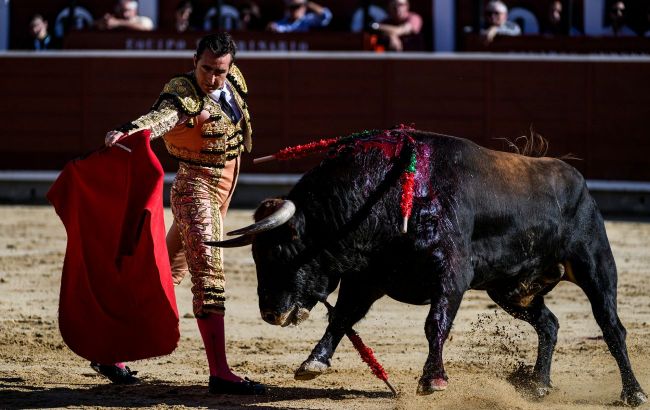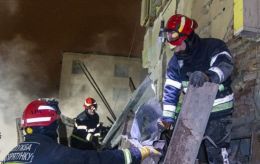Real reasons for bulls' aggression in bullfighting
 Does the color red really provoke bulls during bullfights (photo: Getty Images)
Does the color red really provoke bulls during bullfights (photo: Getty Images)
A red rag to a bull is a popular phrase that means to irritate someone or provoke violence. The phrase to see red implies blind rage. Both phrases originate from the Spanish tradition of bullfighting, where the torero performs a kind of dance with the bull.
Here is an explanation of whether bulls are truly provoked by the color red.
Bulls are not able to see the color red
Bulls are partially color blind. Like all large horned cattle and most mammals, they are dichromatic, meaning they can only see two main types of colors.
Unlike humans, they do not have red receptors in their retinas and can only see shades of yellow-green and blue-violet light.
Matadors only use a red muleta in the final stage of a traditional bullfight. In the earlier stages, they use a purple-yellow cape (capote).
What really provokes bulls
The TV series Mythbusters on Discovery in 2007 released an episode called Red Rag to a Bull. Five tests were conducted:
- First, in the arena, they placed one static flag of each color: white, blue, and red. When the bull was released, it attacked all three flags separately, regardless of color.
- Next, all three static flags were placed in the arena at once, and again the bull attacked each flag, regardless of color.
- In the third stage, a remote-controlled pulley system was used to compare the bull's reaction to movement. While a red flag remained stationary in the arena, the Mythbusters moved the blue flag across the arena using a zipline. The bull chased after it, completely ignoring the static red flag. Next, three mannequins with mechanized arms were placed in the arena, and each one waved a red, white, or blue flag separately. Initially, the bull attacked the white, then the blue, and finally the last one, the red mannequin.
- For the final test, one of the show's hosts dressed in all red and stood still in the same arena where two professional matadors had already run. When the bull was released, it attacked only them, ignoring the stationary person.
The results of the experiment confirmed that bulls are primarily provoked by movement, not color.
Fight or flight
A significant factor influencing the aggressive behavior of bulls (and animals in general) is the fight or flight response when a matador intrudes into their personal space.
The International Longhorn Association explains how to handle large horned cattle: understanding the flight zone, defined as the animal's personal space, is key to easy and quiet handling.
In simpler terms, if you enter an animal's line of sight, it will start moving. And vice versa.
The flight zone factor is inherent in all animal species, including humans. When someone or something invades our personal space, we try to move away until the intrusion is no longer perceived as a threat.
The size of the flight zone in large horned cattle is determined by many factors: the animal's temperament, conditions (corral, pasture), location, and the number of personnel, among others.
Why red color specifically
There is a claim that red was chosen to hide blood when the matador kills the bull (the traditional ending of a bullfight). However, there is no evidence for this.
Overall, the use of the color red has cultural significance in bullfighting, a practice that spans many centuries.
The muleta and capote are not just tools used by the matador; they are symbols of the bullfight in Madrid. Bright colors and intricate patterns are instantly recognizable to spectators, making them an important component of the spectacle.
As mentioned, in the first and second stages of the bullfight, a purple-yellow capote is used. Then, the matador, along with the picador on horseback and three banderilleros, takes blood from the bull. First, the picador strikes the bull to weaken the muscles of its neck and shoulders. Then the banderilleros attack using sharp, barbed sticks (banderillas).
The color changes only in the third part of the performance, when the matador (which means killer) uses a red muleta and delivers the final blow with a sword.
As we can see, the color red does not provoke aggression in animals. It is rather a reaction to movement and the presence of the matador, which evoke a sense of danger in the bull.
We also published 10 surprising facts about white cats that will amaze you.
Sources used in writing the article: Snopes, Centre of the Cell.

